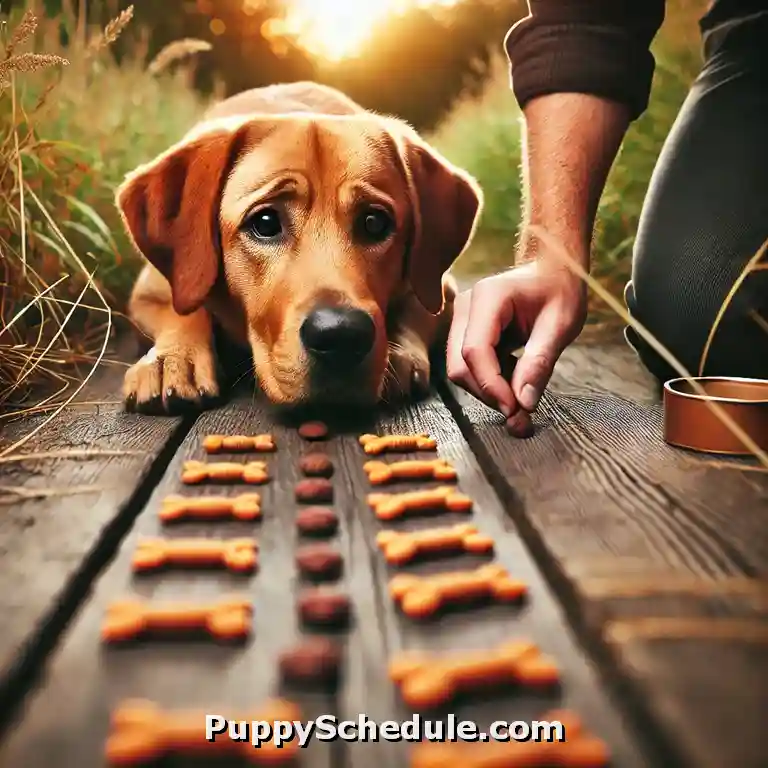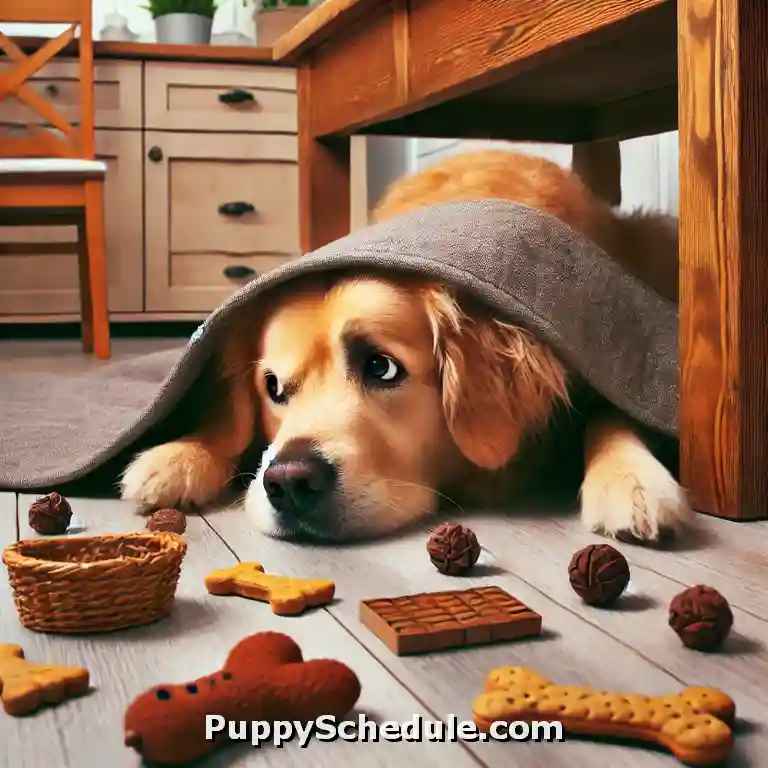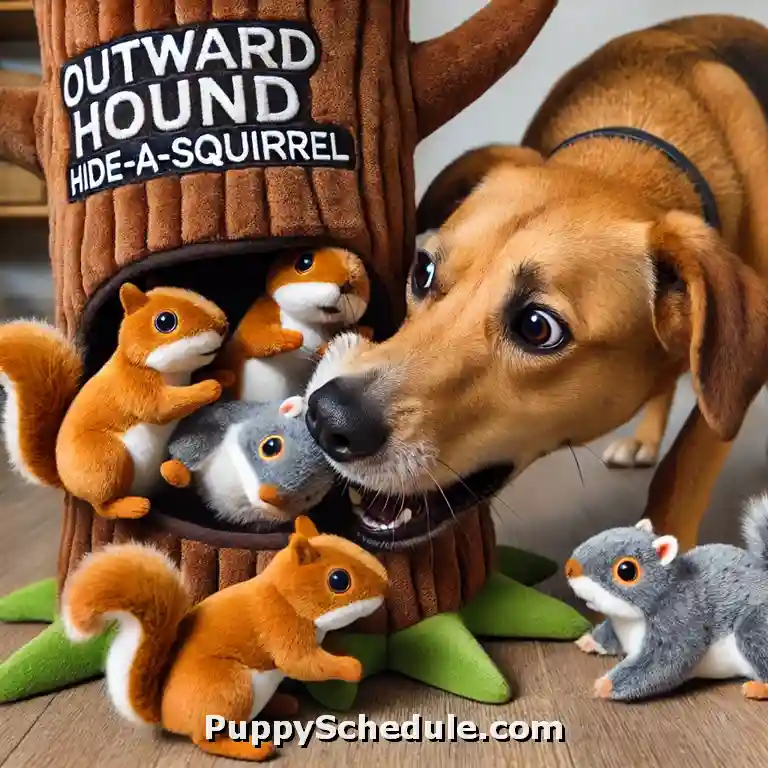15 minutes of mental stimulation for dogs – Dogs are smart and curious. They need mental exercises to stay happy and healthy. Physical exercise is important, but mental exercise is just as important. Here, we will share ways to keep your dog mentally active for 15 minutes.
Why Mental Stimulation is Important for Dogs
Mental exercises help dogs in many ways:
- Prevents Boredom: Keeps your dog busy and stops bad behaviors like chewing or digging.
- Enhances Cognitive Function: Improves your dog’s thinking and memory.
- Reduces Anxiety: Helps calm nervous dogs.
- Strengthens Bond: Activities together make your bond with your dog stronger.
Activities for Mental Stimulation

Puzzle Toys
Puzzle toys challenge your dog’s mind. Some popular ones are:
- KONG Classic Dog Toy: Fill it with treats or peanut butter.
- Outward Hound Hide-A-Squirrel: A toy where your dog finds squeaky squirrels.
- Nina Ottosson Dog Tornado: A puzzle that makes your dog rotate layers to find treats.
Training Sessions
Short training sessions are great for mental exercise. Teach new tricks or practice basic commands. Use treats and praise to make it fun.
Interactive Games
Games like hide and seek or fetch can keep your dog’s mind busy. Hide treats around the house and let your dog find them.
Scent Work
Dogs have a strong sense of smell. Create scent trails with treats or toys, and let your dog follow the trail.
Food-Dispensing Toys
These toys release food as your dog plays. Some popular ones are:
- PetSafe Busy Buddy: A toy that gives treats as your dog plays.
- Starmark Bob-A-Lot: A toy that wobbles and releases treats.
- Trixie Activity Flip Board: A puzzle that needs different techniques to get treats.
Incorporating Mental Stimulation into Daily Routine

Incorporating Mental Stimulation into Daily Routine
Morning Routine
Start your day with a short training session or an interactive game. This can be a quick session teaching your dog a new trick or practicing basic commands.
Activities like a game of hide and seek with treats or a few minutes of fetch can help stimulate your dog’s mind and provide physical exercise. This positive start helps set the tone for the day and ensures your dog gets some mental exercise before you leave for work.
Meal Time
Using puzzle feeders during meal times is an excellent way to combine eating with mental stimulation. Puzzle feeders make your dog work for their food, which can slow down fast eaters and provide a mental challenge. This not only helps with digestion but also keeps your dog entertained and mentally engaged while eating. Food-dispensing toys like the KONG Classic Dog Toy or the PetSafe Busy Buddy are great options to consider.
Evening Routine
End the day with a relaxing scent work activity or a gentle training session. Scent work involves creating scent trails with treats or toys and encouraging your dog to follow them. This can be very calming and is a great way for your dog to wind down. Alternatively, a gentle training session focusing on reinforcing basic commands or learning a simple new trick can help your dog relax and prepare for a restful night’s sleep.
Detailed Breakdown of Activities

Puzzle Toys
- KONG Classic Dog Toy: Fill it with treats. The shape makes it bounce unpredictably.
- Outward Hound Hide-A-Squirrel: A toy that taps into your dog’s hunting instincts.
- Nina Ottosson Dog Tornado: A complex puzzle for advanced dogs.
Training Sessions
- Basic Commands: Practice sit, stay, come, and heel.
- Advanced Tricks: Teach tricks like roll over or fetch specific items.
- Clicker Training: Use a clicker to mark good behavior and teach new tricks.
Interactive Games
- Hide and Seek: Hide treats and let your dog find them.
- Fetch with a Twist: Use different toys or add obstacles.
- Tug-of-War: Use a sturdy rope and play safely.
Scent Work
- Scent Trails: Create trails with treats.
- Scent Work Kits: Use kits designed for dogs.
- Find the Treat: Hide treats and let your dog find them.
Food-Dispensing Toys
- PetSafe Busy Buddy: Adjust difficulty as needed.
- Starmark Bob-A-Lot: Wobbles and keeps your dog engaged.
- Trixie Activity Flip Board: Use different techniques to get treats.
Tips for Maximizing Mental Stimulation
- Rotate Toys: Keep things fresh by rotating toys.
- Vary Activities: Mix different activities for a balanced workout.
- Use Positive Reinforcement: Always reward with treats and praise.
- Monitor Your Dog’s Interest: Switch activities if your dog seems bored.
Signs Your Dog Needs More Mental Stimulation

Here are some signs that your dog might need more mental activities:
Excessive Barking:
If your dog barks a lot, it might be a sign they are bored and need more to do.
Destructive Behavior:
Chewing on furniture, shoes, or other items can indicate that your dog needs more mental challenges.
Digging:
If your dog is digging holes in the yard or trying to dig in the house, they might need more mental stimulation.
Restlessness:
Pacing, whining, or not being able to settle down can show that your dog is not mentally satisfied.
Attention Seeking:
If your dog is constantly trying to get your attention, they might be bored and need more activities to keep them busy.
Escaping:
Trying to escape from the yard or home can be a sign that your dog is looking for something more interesting to do.
Overeating or Not Eating:
Changes in eating habits, like eating too much or losing interest in food, can sometimes be related to a lack of mental stimulation.
FAQ
- How often should I provide mental stimulation? Every day, for at least 15 minutes. More is better.
- Can mental stimulation replace physical exercise? No, it should complement physical exercise.
- Signs my dog needs more mental stimulation? Boredom, chewing, digging, and restlessness.
- Risks with mental stimulation activities? Always supervise and use appropriate toys.
- Can senior dogs benefit from mental stimulation? Yes, adjust the difficulty to suit their abilities.
Giving 15 minutes of mental stimulation for dogs each day can greatly improve their life. From puzzle toys to scent work, there are many ways to keep your dog’s mind active.
Use these activities to prevent boredom, reduce anxiety, and strengthen your bond. Always use positive reinforcement varied activities, and monitor your dog’s interests.



